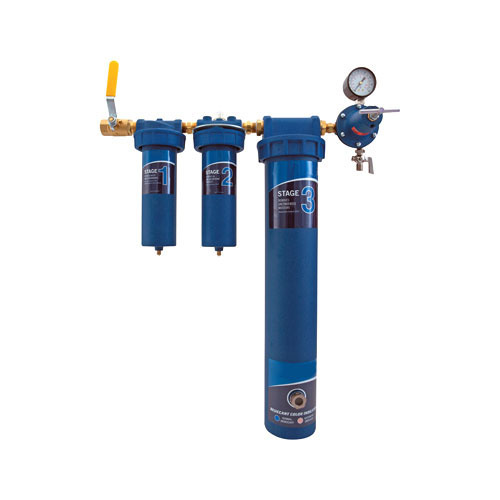what is Air Compressor?
Compressed air systems consist of a supply side, which includes compressors and air treatment, and a demand side, which includes distribution and storage systems and end-use equipment.
read also How Air Compressor System Works?
it is very important to calculate the Air demand in the process to choose the right air compressor.
What is Air Compressor Dryer?
When air leaves an aftercooler and moisture separator, it is typically saturated. Atmospheric air contains moisture. The higher the air temperature, the more moisture the air is capable of holding.
When air is cool it will reach a temperature at which the amount of moisture presented can no longer be contained and some of the moisture will condense and drop out. This temperature is called the dewpoint.
In general, reducing the temperature of saturated compressed air by 20°F will reduce the moisture content by approximately 50%. There is a difference between the dewpoint at atmospheric conditions and the dewpoint at
higher pressures. Drying compressed air beyond the required pressure dewpoint will result in unnecessary energy and costs.
The principle of the adsorption dryer (Regeneration by Air) is based on the physical property of the desiccant to adsorb water vapor.
Absorption:
Absorption and adsorption sounds similar but are different process terms.
Absorption means to include or incorporate integrally some thing else, as part of itself.
In process terminology, absorption occurs when the smallest sample (molecule) of any one substance behaves like a sponge to water.
Adsorption is to hold (molecules of gas or liquid) to its surface allowing the forming of a thin film (layer) on the surface. In our application, water vapor is held to the surface of the alumina while wet air flows through alumina granules in the drier.
Regeneration:
In our context, removing the water vapor attached to alumina by the high velocity flow of dry air in opposite direction.
The dryer consists of two drying towers, one of which is in drying service whilst the other is under regeneration treatment.
During drying, air passes through the desiccant (activated alumina) and goes to the outlet.
In regeneration, bulk airflow is stopped and a small quantity of air (purge air) is allowed to flow through the desiccant in the opposite direction to vent. This stream of air takes away the moisture from the adsorber regenerating it for use again. In some units purge air is through a fixed orifice and in others a regulator is provided.
A valve system (V to V ) automatically reverses the flow when the two towers have to change function, (drying / regeneration) in the drying system.
In this way the drying process is made continual. Before the drying capacity of the desiccant is fully used in the tower while in drying service, it is put to regeneration.
The dryer attached to air compressor dehydrate the compressed air by using desiccant chemicals like Silica Gel and anhydrous Copper Sulfate.
How it Works?
The dryer consists of two desiccant columns, full of Desiccant; to better understand the drying process, consider a typical air dryer, it should work in the following procedure:
- the A column will be in the Drying Mode, starts drying by letting the compressed air passing through it, contacting the desiccant, which absorbs the water vapor from it, it leaves the column dry and goes to the process.
- In the same time, column B will be in the Regeneration Mode, starts regenerating the desiccant in it by passing 10 – 15% of the dried air from column A.
- The above mentioned 1 and 2 steps lasts for 3 – 5 minutes, after this the column B is transferred to Drying Mode too for less than a minute, but column A is saturated with water, while column B is fully dry, but in this period both columns are drying.
- Using an electronic system and some solenoid valves, a switch between the 2 columns happens, i.e.; A column will be turned to Regeneration Mode, while B column will be turned to Drying Mode.
This process will be repeated continuously to keep the air dry.

